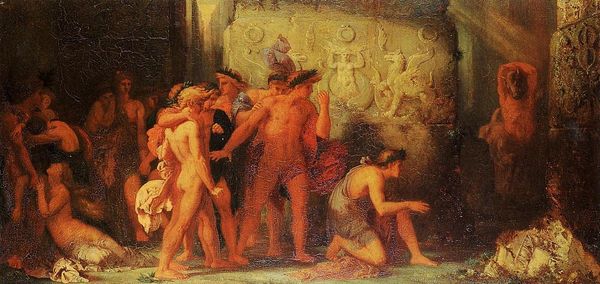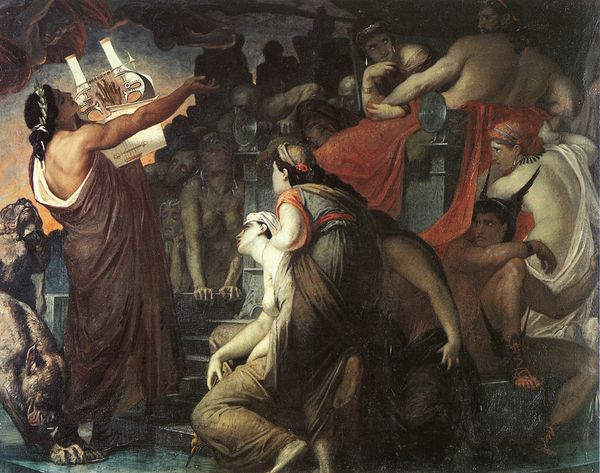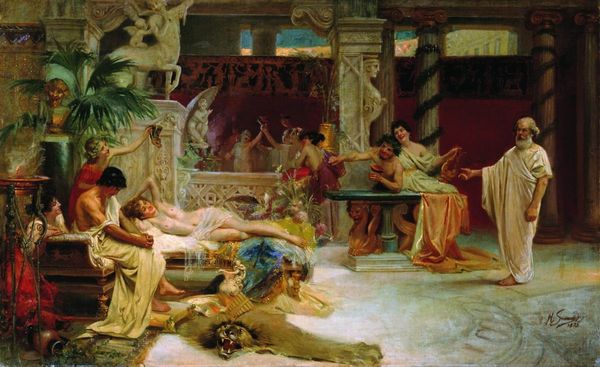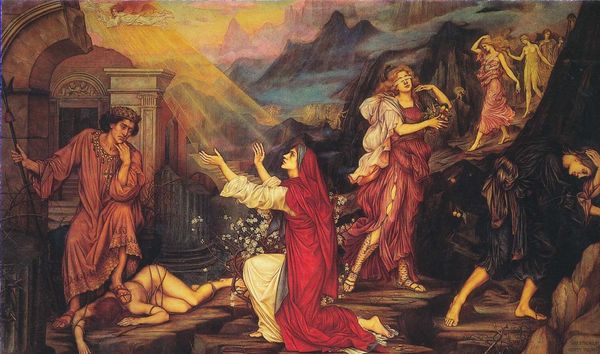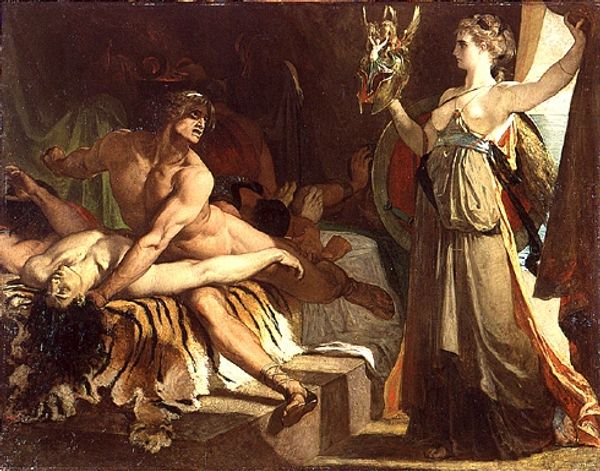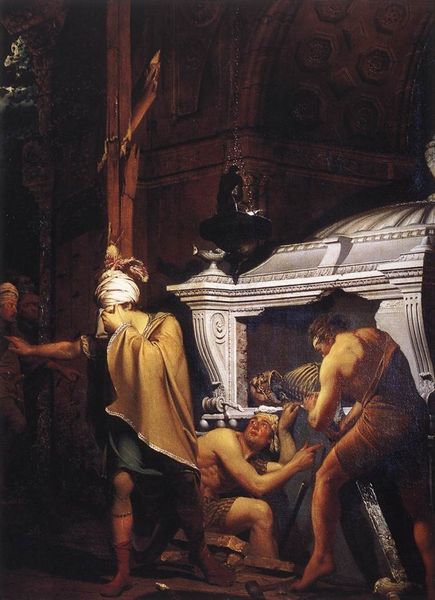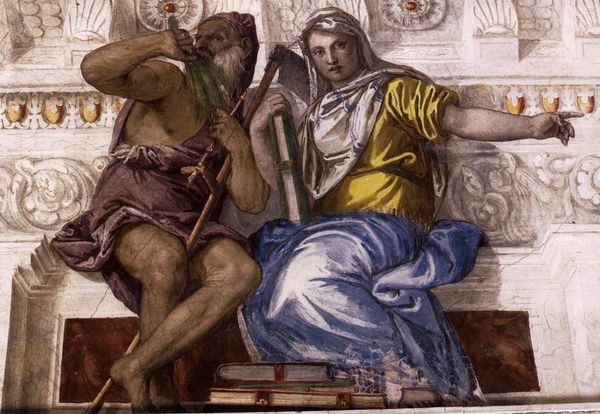
painting, oil-paint
#
portrait
#
medieval
#
painting
#
oil-paint
#
landscape
#
figuration
#
oil painting
#
christianity
#
men
#
mythology
#
painting painterly
#
genre-painting
#
history-painting
#
realism
Copyright: Public domain
Editor: This painting, "Parable of Lazarus" by Fyodor Bronnikov, presents us with a scene filled with symbolism. It's rendered in oil and depicts a man lying at the base of some stairs. There's a stark contrast between him and the figure walking down the steps. What do you see in this piece, especially in terms of visual language? Curator: This image pulses with ancient echoes. Lazarus, a figure known through religious text, lies vulnerable at the threshold of opulence – the building towering above him. Lazarus represents those marginalized, outside the gates of plenty, a timeless predicament, and the figure walking by is the symbol of those inside those gates. Editor: The dog adds an interesting element, doesn't it? There is the opulence contrasted with the misery, what is it all trying to tell us? Curator: Indeed. The dog, traditionally a symbol of fidelity, further underscores Lazarus's abandonment. Bronnikov uses the animal not only as a naturalistic detail, but as a comment on the neglect suffered by the impoverished. Can you feel how the architecture looms – an uncaring backdrop? Editor: I see now how each element – the stairs, the dog, even the vessel carried by the figure – contributes to the overarching narrative. It’s quite powerful. Curator: Exactly. Each contributes to the image’s enduring impact and how it provokes reflection on empathy and responsibility that still carries with us today. I have more to contemplate on Lazarus too. Editor: Me too! Thanks for that interpretation; it certainly opened my eyes to the multiple layers of meaning present in the painting.
Comments
No comments
Be the first to comment and join the conversation on the ultimate creative platform.

